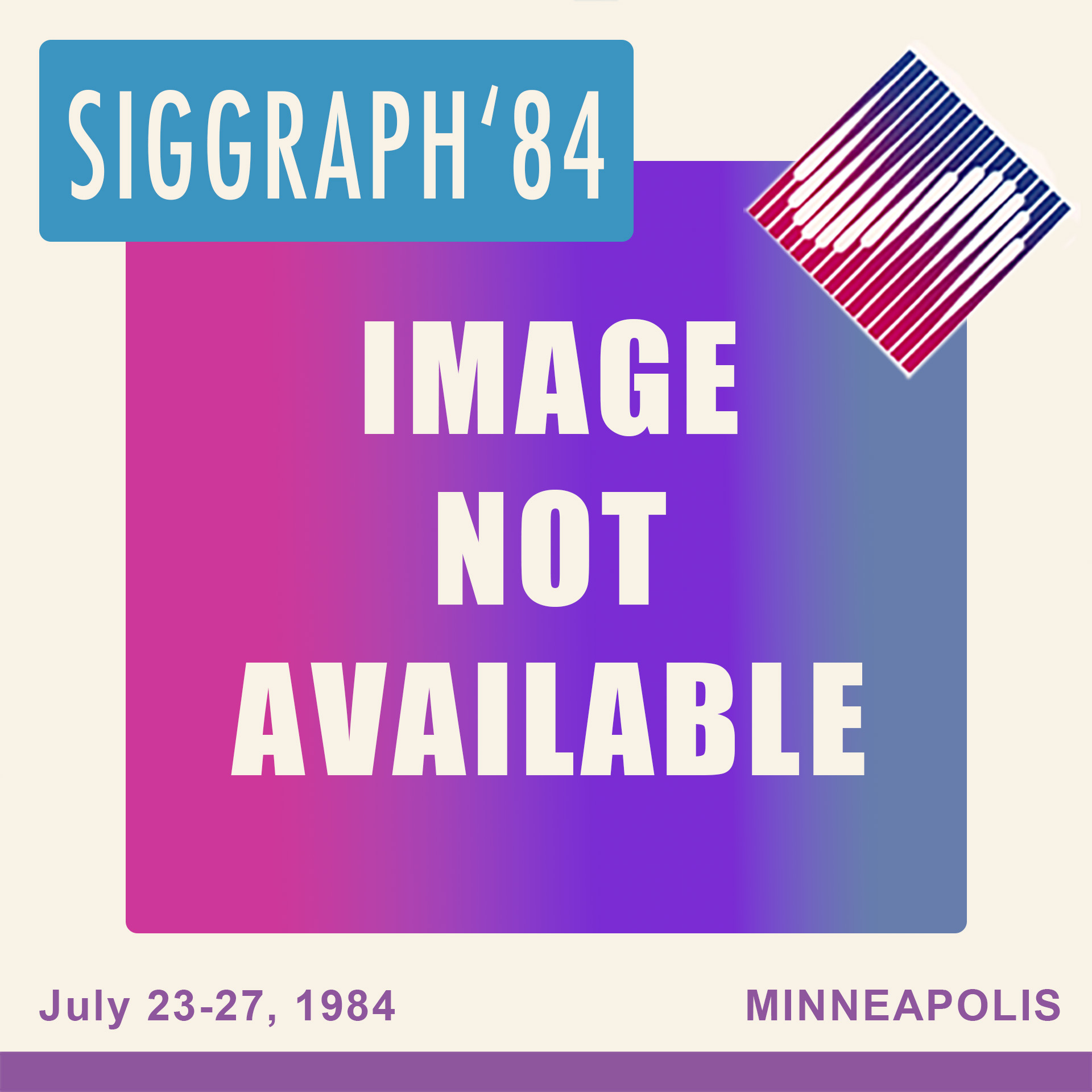“Texture synthesis for digital painting” by Lewis
Conference:
Type(s):
Title:
- Texture synthesis for digital painting
Session/Category Title: Algorithms for Painting and Matting
Presenter(s)/Author(s):
Abstract:
The problem of digital painting is considered from a signal processing viewpoint, and is reconsidered as a problem of directed texture synthesis. It is an important characteristic of natural texture that detail may be evident at many scales, and the detail at each scale may have distinct characteristics. A “sparse convolution” procedure for generating random textures with arbitrary spectral content is described. The capability of specifying the texture spectrum (and thus the amount of detail at each scale) is an improvement over stochastic texture synthesis processes which are scalebound or which have a prescribed 1/f spectrum. This spectral texture synthesis procedure provides the basis for a digital paint system which rivals the textural sophistication of traditional artistic media. Applications in terrain synthesis and texturing computer-rendered objects are also shown.
References:
1. Beauchamp, K. and Yuen, C. Digital Methods for Signal Analysis. Allen and Unwin, London, 1979.]]
2. Brodatz, P. Texture. Dover, New York, 1966.]]
3. Bryant, P. in Playboy 25, 4 (April 1978), 118-127.]]
4. Cross, G. and Jain, A. Markov random field texture models. IEEE Transactions on Pattern Analysis and Machine Intelligence 5, 1 (1983), 25-38.]]
5. Fournier, A., Fussell, D., and Carpenter, L. Computer rendering of stochastic models. Communications of the ACM 25, 6 (1982), 371-384.]]
6. Haruyama, S. and Barsky, B. Using stochastic modelling for texture generation. IEEE Computer Graphics and Applications March, 1984 7-19.]]
7. Hassner, M. and Sklansky, J. The use of Markov random fields as models of texture. Computer Graphics and Image Processing12, 4 (1980) 357-370.]]
8. LeBrun, M. Digital waveshaping synthesis. J. Audio Engineering Society27, 4 (April 1979), 250-265.]]
9. Lu, S. and Fu, K. Computer generation of texture using a syntactic approach. Computer Graphics12, 13 (1978), 147-152.]]
10. Makhoul, J. Linear prediction: a tutorial review. Proc. IEEE63, (1975) 561-580.]]
11. Mandelbrot, B. Fractals-Form, Chance, and Dimension. Freeman, San Francisco, 1977.]]
12. Mandelbrot, B. The Fractal Geometry of Nature. Freeman, San Francisco, 1982.]]
13. Mezei, L., Puzin, M., and Conroy, P. Simulation of patterns of nature by computer graphics. Information Processing74, 52-56.]]
14. Oldham, K. and Spanier, J. The Fractional Calculus. Academic Press, New York, 1974.]]
15. Reeves, W. Particle systems-a technique for modelling a class of fuzzy objects. Computer Graphics17, 3 (July 1983), 359-376.]]
16. Schachter, B. and Ahuja, N. Random pattern generation processes Computer Graphics and Image Processing 10, 2 (1979), 95-114.]]
17. Smith, A. Paint, in Tutorial: Computer Graphics, J.C.Beatty and K.S.Booth eds. (IEEE 1982), 501-515.]]
18. Voss, R., Fourier synthesis of Gaussian fractals: 1/f noises, landscapes, and flakes. Presented at ACM Siggraph Conference, 1983.]]
19. Whitted, T. Anti-aliased line drawing using brush extrusion. Computer Graphics 17, 3 (July 1983), 151-156.]]




